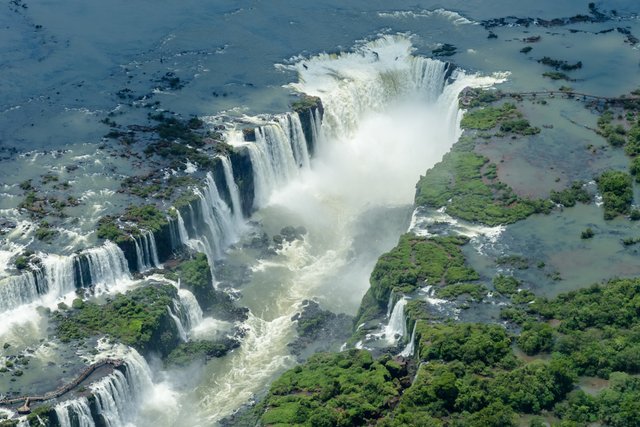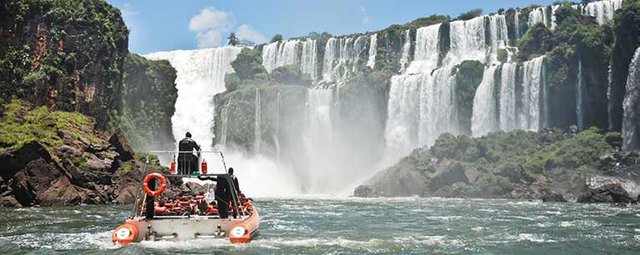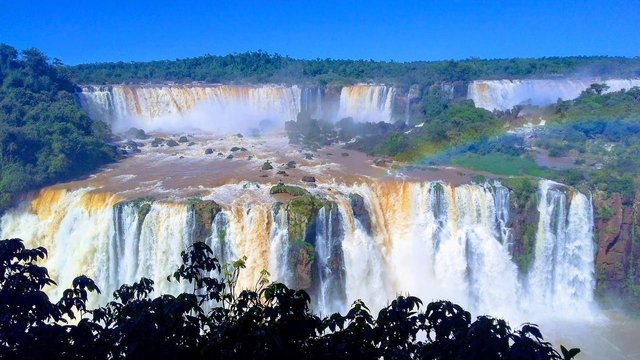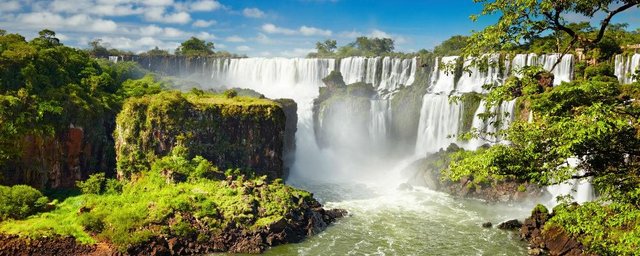
Iguazu Falls are located within the Iguazu Falls National Park, a protected area over 67,720 hectares (167.34 acres) on the Northern border of the Province of Misiones, Argentina. The Park comprises a series of 275 waterfalls at the heart of the Paranaense Rainforest, located 17 kilometers (10.5 miles) from the Iguazu River feeding into the Paraná River, where the Argentine, Brazil and Paraguay borders meet, and where the cities of Puerto Iguazu (Argentina), Foz do Iguaçu (Brazil) and Ciudad del Este (Paraguay) face each other.

In 2007, about two thousand years after the ancient seven wonders were first defined, a global vote was held as part of the New 7 Wonders of the World campaign. The seven wonders selected in that campaign are all man-made wonders, and they include the Christ the Redeemer statue in Rio de Janeiro, Brazil.
Next came the New 7 Wonders of Nature campaign in 2011, and Iguazu falls was selected as one of these natural wonders.

Is an incredible area of cataracts on the Iguazu River, 23 kilometers (14 miles) above the confluence with the Alto (Upper) Paraná River
The Falls divide the Iguazú river into the upper and lower Iguazu. Their name comes from the Guarani or Tupi words meaning "great water."[1]
The area consists of a network of 275 waterfalls spanning an area of three kilometers (1.8 miles).
Along the waterfall were constructed many touristic resorts and many activities are offered. For example, on the Brazilian part there is a walkway along the canyon that reaches the base of Devil’s Throat, offering some amazing views. In the Argentinian part, an ecological train brings tourists directly over the falls, after a-one-kilometer long trip.

The area surrounding Iguazu Falls was inhabited 10,000 years ago by the hunter-gatherers of the Eldoradense culture. They were displaced around 1,000 C.E. by the Guaraní, who brought new agricultural technologies, and were displaced in turn by the Spanish and Portuguese conquistadores in the sixteenth century.
The first European to find the Falls was the Spanish Conquistador Álvar Núñez Cabeza de Vaca in 1541, after whom one of the falls on the Argentine side is named.[1] Jesuit missions followed in 1609.
An ancient legend tells that a god planned to marry a beautiful aborigine named Naipi, who fled with her mortal lover Taroba in a canoe. When the god heard about that, he became very angry and with an unmeasurable rage, he sliced the river creating waterfalls, condemning the two lovers to an eternal fall.
